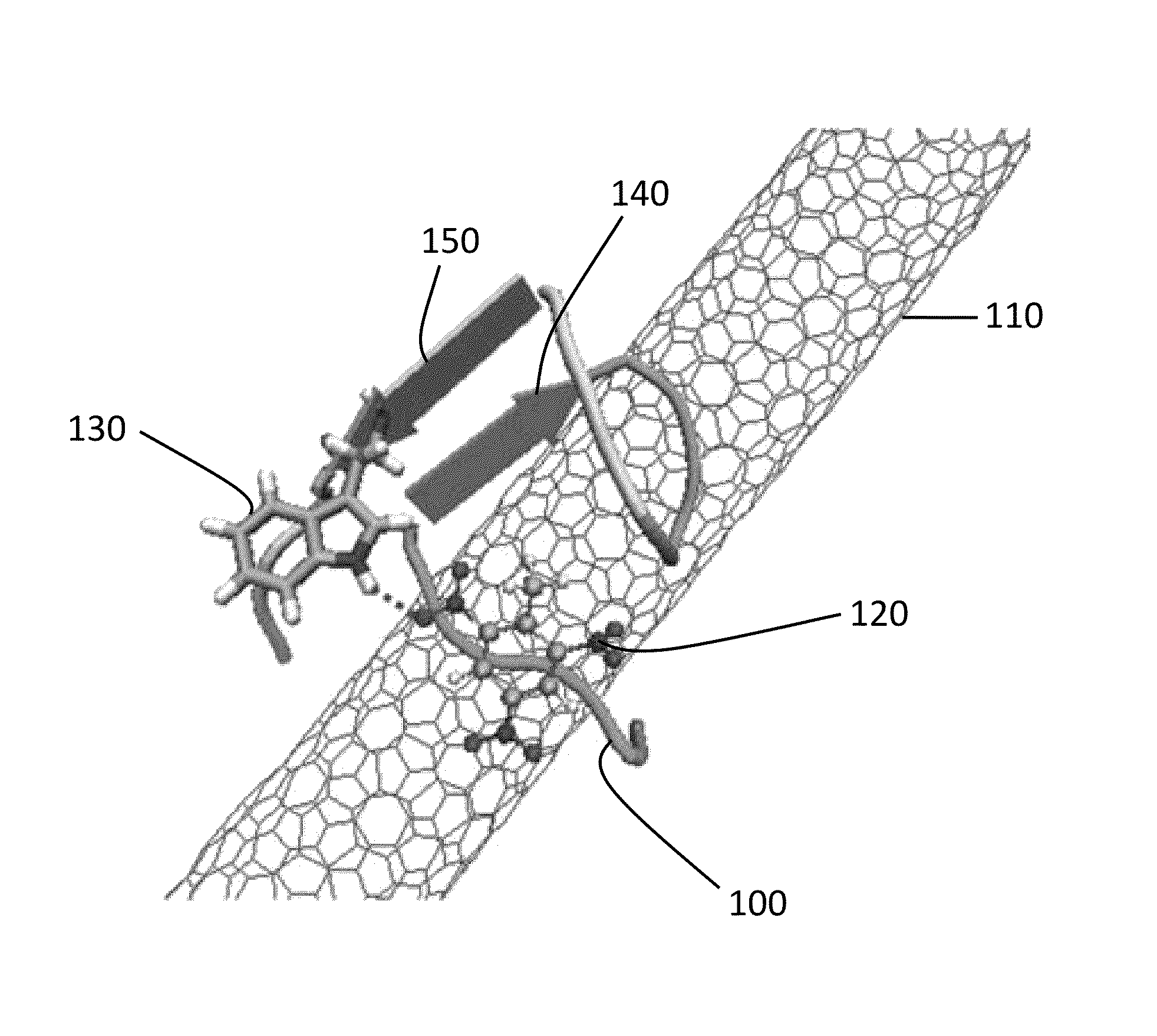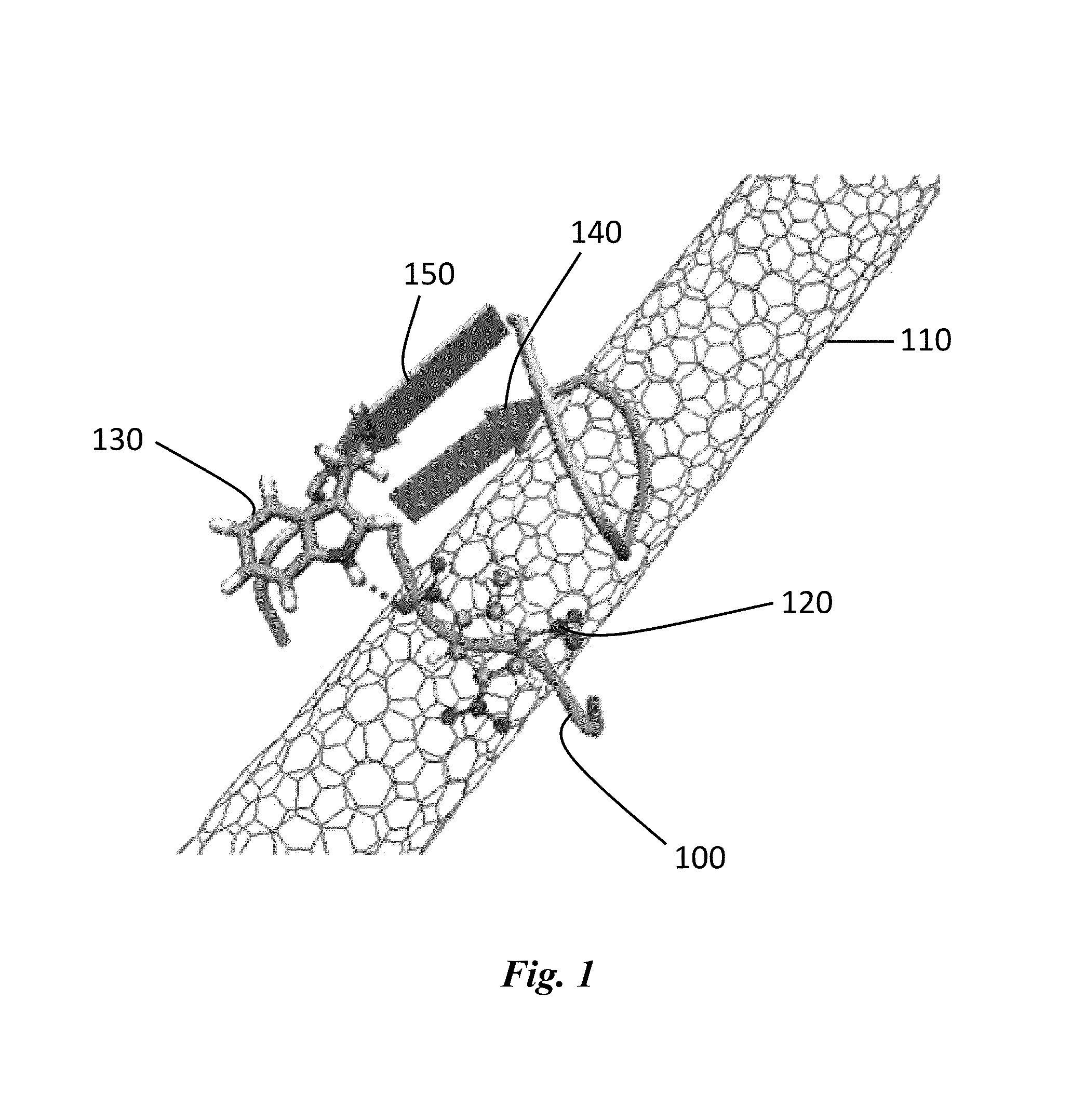Carbon nanotube sensors employing synthetic multifunctional peptides for surface functionalization
a technology of carbon nanotubes and sensors, applied in the field of carbon nanotube-based sensors, can solve the problems of limiting the utility of these sensors, many biomolecules are susceptible to loss of biological activity, instability and degradation,
- Summary
- Abstract
- Description
- Claims
- Application Information
AI Technical Summary
Benefits of technology
Problems solved by technology
Method used
Image
Examples
Embodiment Construction
[0027]The present invention provides a highly sensitive sensor that utilizes carbon nanotubes functionalized with a protein sequence. The multifunctional peptide sequence comprises one domain that noncovalently binds to the surface of single-walled carbon nanotubes (SWNTs), while a second domain recognizes and non-covalently binds to a target molecule. The sequence of the peptide may be tailored to allow it to recognize and bind to specific target molecules, such as chemicals, biological materials, and explosives, in particular trinitrotoluene. The binding of the target molecule to the peptide may alter a material property of the SWNTs, such as electrical or thermal conductivity, which may be harnessed to create a sensor. For example, a SWNT field effect transistor (FET) may be functionalized with one or more peptide sequences and placed into a sensor platform that monitors the source-drain current for changes in electrical conductivity. The disclosed invention is particularly usefu...
PUM
| Property | Measurement | Unit |
|---|---|---|
| thickness | aaaaa | aaaaa |
| diameter | aaaaa | aaaaa |
| temperature | aaaaa | aaaaa |
Abstract
Description
Claims
Application Information
 Login to View More
Login to View More - R&D
- Intellectual Property
- Life Sciences
- Materials
- Tech Scout
- Unparalleled Data Quality
- Higher Quality Content
- 60% Fewer Hallucinations
Browse by: Latest US Patents, China's latest patents, Technical Efficacy Thesaurus, Application Domain, Technology Topic, Popular Technical Reports.
© 2025 PatSnap. All rights reserved.Legal|Privacy policy|Modern Slavery Act Transparency Statement|Sitemap|About US| Contact US: help@patsnap.com



